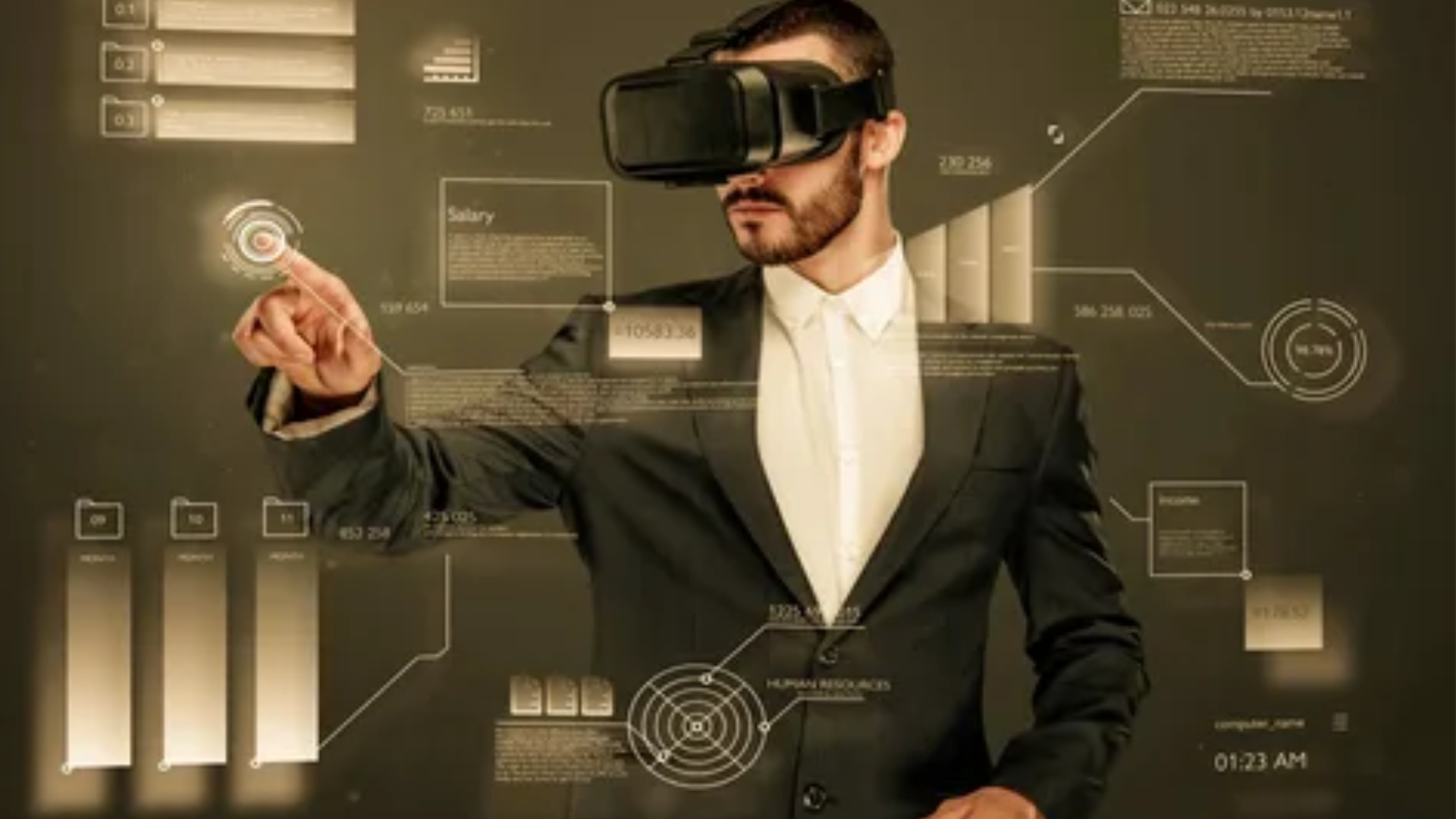Let’s talk about two of the most buzzworthy technologies in recent years: augmented reality (AR) and virtual reality (VR). If you’ve ever found yourself diving into a game or app that makes you feel like you’re part of the experience, chances are you’ve encountered one of these technologies. Both AR and VR are cool, futuristic tools that make our lives a little more interactive and immersive. But while they may sound similar, they’re actually very different. So, let’s break down the mysteries of these two tech marvels and figure out what makes them tick—and where they differ.
What exactly is augmented reality (AR)?
It’s like putting your world in supercharge mode.
If you’ve ever used a Snapchat filter or poked around with an app that makes a dinosaur appear in your living room, congratulations! You’ve dabbled in AR. Augmented reality is a technology that overlays digital information—like images, sounds, or even virtual objects—onto the real world. The key here is that AR doesn’t take you out of your environment. Instead, it adds a layer of digital enhancements to what you’re already seeing.
For example, imagine you’re looking at a street through your phone’s camera. An AR app could pop up directions on the screen or superimpose labels on certain buildings. Your eyes don’t fool you into thinking you’re somewhere else—you’re still seeing the real world—but everything is a little more exciting.
Here’s a quick rundown of AR:
- Overlay: AR adds digital elements to your real world.
- Interactive: It responds to your interactions with the world, like moving or clicking.
- Real-World Focused: You still interact with the real world while using AR.
Popular Examples of Augmented Reality
- Pokemon Go is an app that has people chasing virtual Pokemon in their neighborhoods. You were still walking around, but suddenly Pikachu was hanging out by your front door.
- Google Maps AR: Instead of just a map, Google now shows directions right on the street in real time as you walk.
| AR Features | Example |
|---|---|
| Interactive overlays | Snapchat filters and Instagram AR effects |
| Navigation aids | Google Maps AR. |
| Gaming | Pokémon Go, AR-based treasure hunts |
What is virtual reality (VR)?
Goodbye, Reality—Hello, Virtual World!
If AR is about blending the digital world with the real world, then VR is like a total escape from reality. Virtual reality, as the name suggests, creates an entirely new, simulated environment that you experience through a VR headset. It’s like stepping into a completely different world—a world where the laws of physics, time, and space might as well be written by someone who’s had a little too much coffee.
When you put on a VR headset, it’s as if you’re no longer in your living room. You could be swimming with sharks, fighting off zombies, or even attending a concert from the comfort of your couch. Virtual Reality (VR) provides an immersive experience that deceives your brain into thinking you’re in a different place.
Here’s what you need to know about VR:
- Total Immersion: Once you’re in VR, you’re no longer aware of the physical world around you.
- Sensory Overload: VR involves not only visuals but also sounds and sometimes even haptic feedback (touch sensations).
- Escapism: VR lets you escape to another world entirely.
Popular Examples of Virtual Reality
- Oculus Quest: This standalone VR headset offers an immersive experience from gaming to 3D movies.
- PlayStation VR is designed for gamers who want to enhance their gaming experience.
| VR Features | Example |
|---|---|
| Complete immersion | Oculus Rift, HTC Vive, and PlayStation VR |
| Gaming experience | VR horror games and immersive sports |
| Educational experiences | Virtual field trips and museum tours |
The Key Differences Between AR and VR
So, while AR and VR are both exciting technologies, how do they compare? Here’s a table that might help clear things up.
| Aspect | Augmented Reality (AR) | Virtual Reality (VR) |
|---|---|---|
| Definition | Digital content overlays the real world | A completely computer-generated environment |
| Immersion Level | You’re still grounded in reality. | The level of immersion in the virtual world is high. |
| Interactivity | Interacts with the real world | Interacts with a fully virtual world |
| Hardware Needed | Smartphone or AR glasses | VR headsets, sometimes with motion controllers. |
| Experience Type | Enhances real-world experience | Escapes reality completely |
The Level of Immersion: The quality of reality varies. AR keeps you in touch with the real world while adding digital flourishes, while VR drops you completely into a digital universe. Think of AR like a cool app that makes things more fun and VR like a ride at an amusement park that takes you to another dimension.
Hardware Requirements: AR can work on your phone, tablet, or special glasses, while VR usually requires a headset and potentially some controllers to really make you feel like you’re living in a game.
When is it appropriate to use AR and VR?
AR for the Everyday Adventures
Since AR adds a digital layer to the world around you, it’s perfect for activities where you want to stay grounded in reality but also add some cool enhancements.
- Navigation: Get step-by-step directions right on your screen in real time.
- Learning and Education: Imagine using augmented reality to visualize anatomy while studying biology, or seeing 3D models of planets while studying space. Cool, right?
- Social Media: Snap a humorous selfie with AR filters or create augmented reality art to share with friends.
VR for Escaping Reality
VR, on the other hand, is excellent when you want to immerse yourself in a new, imaginative world. Here’s when you would use VR to its fullest potential:
- Gaming: VR gaming is next-level fun. You’re not just playing a game—you’re in the game.
- Virtual Travel: Explore distant planets, ancient civilizations, or underwater worlds—all from your couch.
- Training and Simulations: VR is often used for flight simulations, medical procedures, and other hands-on training experiences that require immersion.
Can You Mix AR and VR?
Funny! You should ask! A concept known as Mixed Reality (MR) integrates aspects of both Augmented Reality (AR) and Virtual Reality (VR). MR allows you to interact with both real-world and virtual elements simultaneously, creating a truly hybrid experience. Through MR, you can manipulate a virtual object as if it were real while still seeing and interacting with the real world. It’s like blending the best parts of both worlds for the ultimate experience.
Imagine a situation where you could grab a virtual object in your living room and move it around, all while your real-world furniture stays in place. That’s mixed reality—cool, right?
The Future of AR and VR: What’s Next?
The Sky’s the Limit
Both AR and VR are still evolving. In the future, we might see these technologies integrated into everything from work meetings to healthcare. AR could help doctors perform surgeries with real-time digital guidance, and VR might let us visit historical landmarks without leaving home. Plus, imagine AR-enhanced shopping, where you can try on clothes virtually before hitting the “buy” button!
Both technologies are influencing the future in ways that we have only begun to explore. So, buckle up—there’s plenty more to come.
Fun Fact: Did you know that in the future, AR glasses might replace your smartphone? You could literally walk around, interacting with digital content as if it’s just part of your daily environment. Move over, phones—AR glasses might just be the next big thing!

In Conclusion: Which Reality Do You Prefer?
So, now that we’ve explored the deep, mystical waters of AR and VR, we can finally answer the big question: What’s the difference? To put it simply:
- AR enhances reality by adding cool, interactive elements to the world around you.
- VR creates a whole new reality that immerses you in a fully digital experience.
Whether you’re into gaming, learning, or just having fun, these technologies offer endless possibilities. And who knows? Maybe someday we’ll be living in a world where we can hop between augmented and virtual realities as easily as we swipe through apps. Until then, enjoy exploring the reality (or realities) that fit your fancy!










Leave a Reply